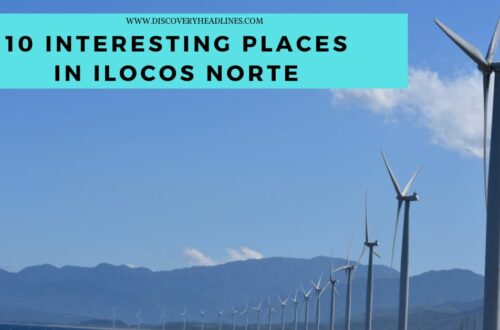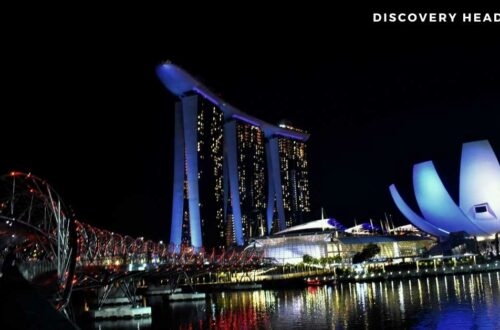The Strange Beauty of Floating Islands That Wander the Earth
Imagine seeing an island – complete with plants, trees, and even animals – floating across a vast body of water, untethered and drifting with the wind. This is not science fiction. These are floating islands, real-world phenomena that have captured human curiosity for centuries. Found in regions from South America to Southeast Asia, these islands challenge our ideas of what land should be: stationary, rooted, and permanent. Instead, they float, drift, and sometimes even vanish.
While their existence might seem magical, floating islands are ecological marvels shaped by natural forces, cultural ingenuity, and, in some cases, climate change. In this exploration, we uncover the fascinating truths behind these wandering lands, from the handmade wonders of the Uros people to volcanic rafts that traverse entire oceans. And if you enjoy discovering Earth’s hidden wonders, you may also love our article on Socotra, the island of alien landscapes.

What Are Floating Islands?
Floating islands are buoyant masses of vegetation, soil, and organic material that float on the surface of lakes, rivers, or even oceans. They can be natural – formed over time through plant root systems and sediment buildup – or human-made, crafted with materials like reeds or engineered platforms.
Natural floating islands are often found in wetlands and lakes, held together by the intertwined roots of aquatic plants. Over time, these islands can grow large enough to support trees and wildlife. In rare cases, volcanic eruptions create pumice rafts that float for thousands of kilometers, such as the massive one generated by the 2012 eruption near Tonga, as documented by NASA Earth Observatory.
Man-made islands, like those found in Peru’s Lake Titicaca, blend survival and tradition, offering a unique glimpse into how human ingenuity can adapt to nature’s most fluid elements.
The Uros Floating Islands: A Living Culture on Water
The Origins of the Uros Floating Islands
One of the most iconic examples of floating islands is found in Lake Titicaca, on the border of Peru and Bolivia. Here, the Uros people have lived on floating islands made entirely of totora reeds for centuries. These Uros floating islands were originally constructed as a defense mechanism – to stay safe from hostile groups by simple relocating.
Totora reeds grow abundantly in the lake and serve as the foundation for the islands, homes, boats, and even furniture. Layers of reeds are laid in crisscross fashion to build buoyant platforms that are continuously replenished as the bottom layers rot away.
Life on the Lake Titicaca Floating Islands
Life on the Lake Titicaca floating islands is both beautiful and challenging. Families cook over clay stoves, fish for sustenance, and sleep in reed huts. Today, tourism plays a significant role in sustaining the Uros economy, offering a glimpse into a way of life that’s increasingly rare in our modern world.
Tourists can visit these islands and experience reed boat rides, traditional dance, and crafts. Despite the influx of visitors, many Uros communities strive to maintain their cultural identity while adapting to modern influences.
Challenges Faced by the Uros People
Climate change, pollution, and the fragility of reed ecosystem pose serious challenges. The islands are susceptible to decay, requiring constant maintenance. Rising temperatures and receding water levels also threaten the delicate balance needed for the reeds to thrive.
Still, the Uros people endure – guardians of a floating legacy that blends tradition, adaptation, and resilience.
Floating Islands Beyond Peru: Other Real-World Marvels
Volcanic Pumice Rafts That Drift for Thousands of Miles
Not all floating islands are built by hand or made of reeds. When underwater volcanoes erupt, they sometimes release vast amounts of pumice – light, porous volcanic rock that floats. One of the most remarkable examples occurred in 2012 when a pumice raft the size of Manhattan was spotted drifting across the Pacific Ocean, as detailed by National Geographic.
These rafts can carry marine organisms across long distances, inadvertently helping to repopulate coral reefs or introducing invasive species.
Floating Islands in China: Nature’s Buoyant Wetlands
In China, particularly in Dongting Lake and Poyang Lake, naturally formed floating islands appear seasonally. Made from dense mats of vegetation, these islands shift location with water levels, currents, and storms. Some are large enough to support water buffalo and even temporary shelters.
Such phenomena are studied for their ecological importance, as they provide habitat for migratory birds and help in nutrient cycling.
Floating Islands NYC: A Modern Twist
In New York City, the concept of floating islands has inspired innovative eco-projects like Swale, a floating food forest on a barge. It offers free access to fresh produce and raises awareness about food justice and urban sustainability. This modern interpretation shows how the floating island concept continue to evolve and inspire.
How Do Floating Islands Form and Move?
Natural Mechanisms Behind Floating Island Formation
Most natural floating islands begin with aquatic plants whose roots tangle and trap sediment. Over time, these mats thicken, gain buoyancy, and break off to drift. Peat layers, decomposing plant matter, and even gases form microbial activity contribute to their ability to float.
Forced That Move Them
Once formed, floating islands are at the mercy of their environment. Wind, river currents, storms, and even tidal forces can move them great distances. In extreme cases, islands may relocate dozens or even hundreds of kilometers.
Understanding their movement is crucial in managing waterways and preventing navigation hazards, particularly in flood-prone areas.
The Floating Islands Phenomenon and Climate Change
Climate change plays a paradoxical role. On one hand, rising temperatures and changing rainfall patterns can destabilize ecosystems, reducing the formation of new floating islands. On the other, increased flooding can lead to more detachment of floating mats from riverbanks and wetlands.
Floating islands also offer hope: their vegetation-rich surfaces can sequester carbon and support biodiversity. Conservationists study them to better understand nature-based solutions to climate challenges.
The Enduring Fascination with Floating Islands
Floating islands are more than natural oddities – they are metaphors for resilience, adaptability, and the fine line between land and water. They’ve inspired myths, travel adventures, and ecological innovations.
Whether drifting across Lake Titicaca or sailing through the open Pacific, these islands challenge our understanding of place and permanence. They are, in every sense, strange beauties – ephemeral yet enduring, fragile yet powerul.
Conclusion
In a world where most things are anchored and unchanging, the floating islands remind us of nature’s unpredictability and wonder. From the hand-woven reed homes of the Uros to volcanic rafts that ride the sea, they invite us to see the world not as fixed but as fluid.
Their beauty lies not only in their appearance but in the stories they carry – of survival, transformation, and the gentle art of letting go.
Want to discover more surreal landscapes like this? Don’t miss our story on Socotra: Exploring the Island of Alien Landscapes.






One Comment
Ed
Floating islands are a stunning example of nature’s creativity and resilience. It’s amazing how these drifting ecosystems support both wildlife and human communities. They challenge our ideas of permanence, showing that even land can wander.